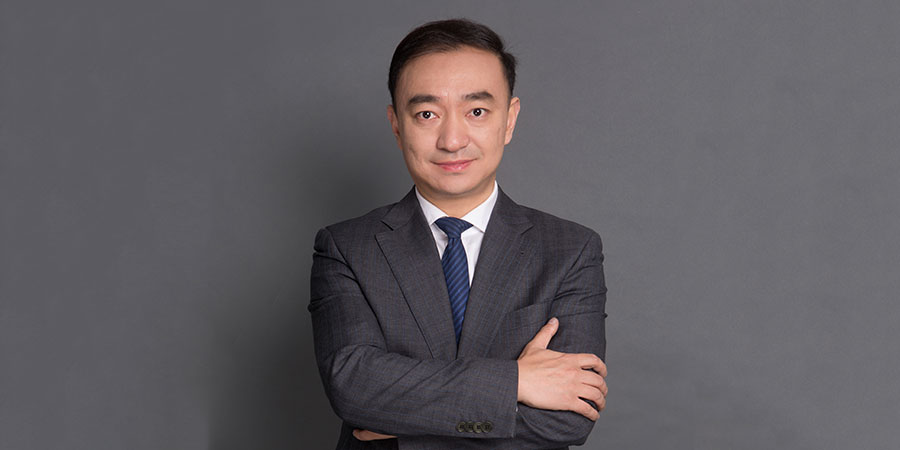The age of 5G is upon us, and with it comes a host of complex applications that promises unbridled communication and seamless connectivity across the globe. As such, mobile operators and the telecommunications industry are being faced with the daunting task of readying themselves for the advent of the first 5G commercial networks. Out of all the novelty applications within the 5G architecture, network slicing will undoubtedly form the framework upon which operators will build their specific consumer use cases such as autonomous driving, smart homes and the Internet of Things (IoT), just to name a few.
As a pioneer in 5G network slicing, ZTE is no stranger to the intricacies involved in creating specialised, highly flexible and diversified solutions for a range of vertical industries. With the release of the world’s first 5G end to end (E2E) network slicing solution back in 2018, ZTE established itself as a frontrunner in the race towards 5G commercialisation.
Mr. Jason Tu Jiashun, Chief Scientist of Virtualization at ZTE said, “ZTE’s E2E network slicing solution supports end-to-end orchestration of wireless access, transmission and core network equipment from multiple vendors. Up to 4096 different 5G end-to-end slices can be customized for different enterprises to meet different requirements for geographical area, terminal type (human, IoT), network latency, mobility, network coverage, connection density and connection costs.”
According to him, this enables mobile operators to provide a fully independent VPN for those 4096 enterprises using physical 5G networks. As such, there are a number of advantages that come with the utilisation of 5G E2E network slicing such as end to end network orchestration for IoT applications, a monumental reduction in slice OPEX for enterprises, application reliability via shared transmission and a higher level of security compared to generic enterprise grade networks. “ZTE is the first one in the industry to provide 5G end-to-end network solution together with SliceStore to help operators realize VPN direct sales to the enterprise. This has helped many enterprises that were unable to afford the private network before to quickly integrate 5G network into their existing work, thus stimulating greater innovation,” Mr Tu said.
Mr Tu further illustrated that the integration of 5G E2E network slicing within their product design, production, logistics and sales is without question a direct contributor to production efficiency, acceleration in product and service launches as well as the decrease in OPEX/CAPEX. One example of this was the launch of the first 5G Stand Alone (SA) network with "SliceStore + Edge computing + Intelligent manufacturing" solution in October 2019 by ZTE and China Telecom in collaboration with Bluetron Industry Group which has “helped them build a new 5G smart factory.”
When asked about his views on net neutrality in relation to network slicing in a 5G era, Mr Tu said, “Although 5G claims to provide ten times the network performance compared with 4G, 5G will still have to face the scene of resource conflict due to the access of more terminals of IoT. Some typical 5G applications, such as industrial control, automatic driving and remote surgical operation, need the absolute SLA guarantee from the network, otherwise it will bring huge economic losses and even casualties. While other typical 5G applications, such as online video, do not have too many requirements for reliability, but are more sensitive to the economy of network services.”
Mr Tu highlighted that the only way operators can adapt to new changes in net neutrality is to implement network slicing technology for different 5G applications. In this way, each slice can establish its own resources based on the relevant fees.
In layman’s terms, Mr Tu exemplified his point using the importance of low latency for high priority applications, “Some of the machines have a high priority of things for public interest. Autonomous driving is very important for people’s lives, otherwise the car will go out of control and lives will be lost. Therefore, we need low latency for these machines. Although it is a machine, it should have a high priority in terms of communication and the network. If people are only watching Youtube, it should not matter if the connection takes longer because you are only watching videos and the activity itself is considered leisurely in nature.”
When it comes to the legacy of mobile networks now, Mr Tu stated, “For society in the future, the mobile network may be more important than highways and roads in people’s lives and work. The introduction of policy based 5G network slicing ensures the maximum utilization of network resources under the principle of fairness. This in turn can also promote the commercial success of the telecommunication industry together with related vertical industries for work.”








